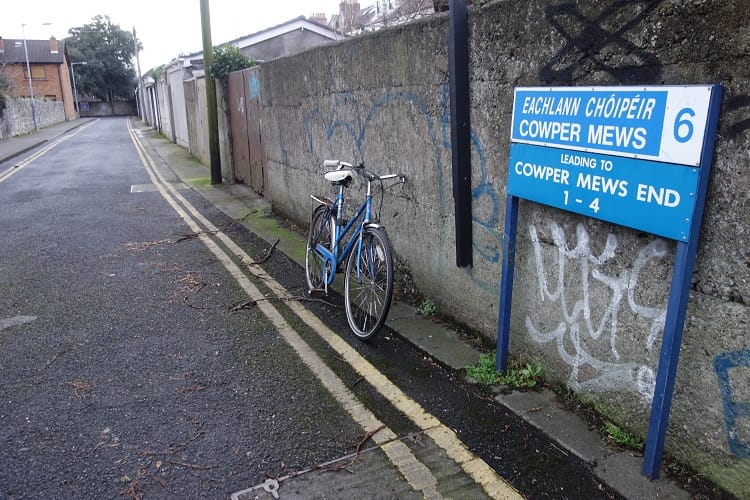What’s the best way to tell area residents about plans for a new asylum shelter nearby?
The government should tell communities directly about plans for new asylum shelters, some activists and politicians say.
By discouraging vehicles from taking high-speed shortcuts through certain residential areas, the plan would create a more appealing space there for cyclists and pedestrians.

In March 2016, Dublin City Council tendered for a study on creating a cycling corridor that Fine Gael Councillor Paddy Smyth had envisioned.
This proposed “quietway” from Donnybrook to Kimmage was aimed at reducing “rat-runs” by vehicles cutting through residential areas rather than using main routes.
It would provide routes for cyclists and pedestrians, away from fast-moving cars, mainly through residential areas.
So what became of that study, and how are plans for this corridor progressing?
According to Smyth, the quietway has been delayed for two reasons. The first is an issue of staffing at Dublin City Council.
The feasibility study is now complete, says Smyth. But now it’s over to the council’s roads and traffic department, and they’re quite busy.
“We’ve limited road engineers at the moment in city council because of the Luas Cross City,” he says. “Something like this, five or ten years ago, could have been dealt with in a few months.”
The council’s press office says the project is still a runner though. “A potential route for the corridor has been identified that requires a series of interventions to the existing environment,” according to a spokesperson in the press office.

“Dublin City Council supports any initiative that increases cycling and walking and opportunities to segregate vulnerable road users from main vehicular traffic,” the spokesperson said.
As Smyth sees it, progressing the quietway makes sense. “Anyone who I’ve dealt with says they’re on board,” he says. “It’s relatively cheap. It would be an amazing amenity for the community and it will hopefully only inconvenience some people.”
According to the council press office, the project is estimated to cost €324,000. Says Smyth: “In terms of what we’re getting here – a cycle route across a whole part of the city – it has a network effect.”
Smyth sees the project in two phases – phase one from Donnybrook to Kimmage, and phase two from Kimmage to Drimnagh. This second phase could link up with the Grand Canal Greenway.
Quietways make sense, says Cian Ginty of IrishCycle.com.
“They’ve been developed in a number of different cities,” Ginty says. “They’ve been developed in Portland, Oregon in the US. They’ve been developed in London, and a version of them has been developed in the Netherlands as well.”
The key to making them successful, says Ginty, is reducing traffic-flow to local traffic only, eliminating rat-runs. Ideally, Ginty says, changes should be made to the built environment in residential areas to make this happen.
That could mean closing off roads to vehicular traffic, or putting in speed bumps, for example.
The engineering firm AECOM was commissioned to complete a feasibility study for Smyth’s proposed quietway last year. It recommended a preferred route.
Section 1 would run from Herbert Park to the Cowper Luas stop, section 2 would run from Cowper Luas stop to Terenure Road North, and Section 3 would run Terenure Road North to Corrib Road.
The original proposed route recently came up against opposition from residents at Frankfort Avenue, says Fine Gael’s Smyth. That’s the second reason the project is delayed. The new proposed route bypasses that spot.
Smyth has now scheduled a public meeting about the quietway for 28 March, in the parish hall of the Church of the Three Patrons on Rathgar Road at 7:30 pm.
Public consultation is the next step. “People don’t like change, even if the motivation for that change is completely justified,” says Smyth. “But at the end of the day, there’s less rat-runs, safer routes to school. It’s hard to see how people could object to that.”
As Ginty of IrishCycle.com sees it, often residents will approve of a quietway once it’s in place.
“It makes their neighbourhood really quiet,” he says. “It means their children can play out on the street. It means they’re not being annoyed by people taking shortcuts through their neighbourhoods.”
Because the scheme will have a significant impact on traffic movements along the route, the feasibility study recommended that a traffic study be carried out.
But with a lack of council resources, the process has been slower than hoped, says Fine Gael’s Smyth. He’s confident the project will continue to move forward though.
Smyth says he wants everyone to have their say, but the benefit of reducing rat-runs, he argues, far outweighs any local complaint.
The quietway design may add to a motorist’s commute at times, by blocking certain access points. “But it’s up to me to try and convince people that that outweighs any relatively minor inconvenience,” he says.
“We need think about the wider community. We need to think about the safety of children and we need to think about long-term health,” he says.